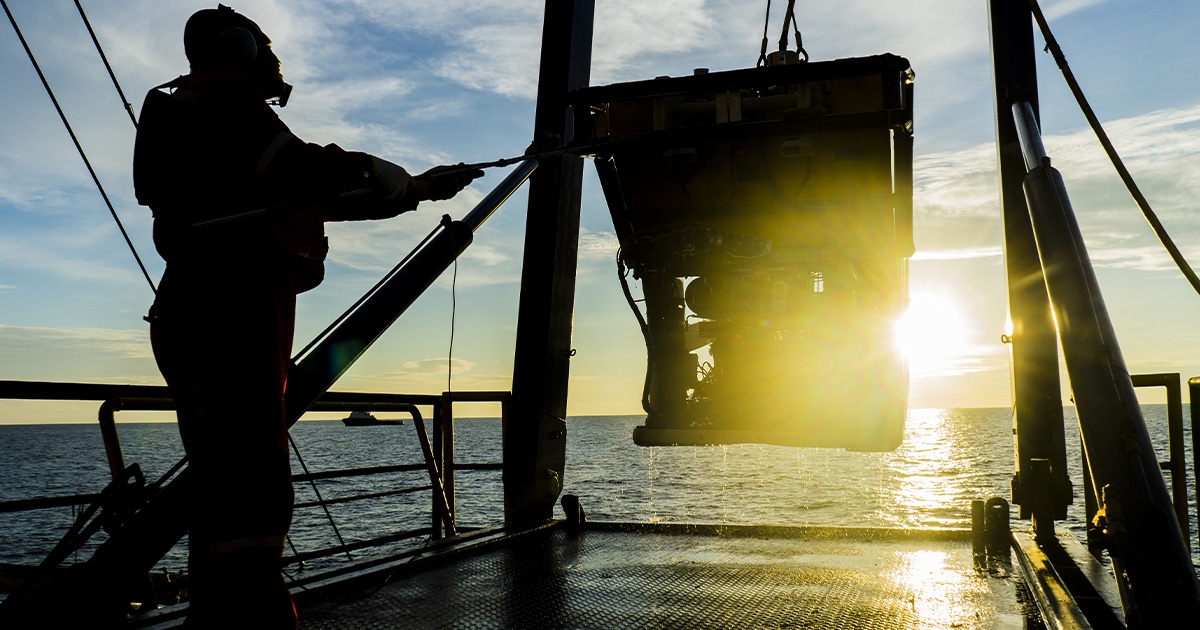The Future of Buoyancy Materials for Resident ROVs

Empty space is often viewed as nothingness or a space that is waiting to be filled—but scientists and engineers know that space is intrinsically valuable. Voids can strengthen structures by design, without adding weight.
The ability to utilize empty space brings new opportunities to many fields, especially in deep-sea exploration.
The issue of weight for Remotely Operated Vehicles (ROVs) used in deep-sea exploration can be overcome using empty space, or rather the use of high-tech hollow glass microspheres (HGMS) filled with air to create high-performance syntactic buoyancy materials—unique composite materials engineered to provide uplift from 1,000 meters subsea to full ocean depth.
Historically, syntactic buoyancy materials have satisfied the ROV industry requirements for density, water absorption, hydrostatic crush strength and bulk modulus. Typically, ROVs deploy on a cyclic operational mode, returning to the surface every 48 to 96 hours for maintenance. However, recent developments have seen several ROV manufacturers create a new class of ROV known as resident ROV or RROV. Specifically engineered for remote deployment between 1,000 and 6,000 meters subsea, long-term immersion of these vehicles is way beyond 96 hours.
The permanence of RROV deployment has changed the performance expectations of buoyancy materials, requiring resistance to elastic compression (reduced volume = reduced displacement and consequently reduced buoyancy). Manufacturers need to develop novel materials with a high bulk modulus, to offset the laws of physics.
RROVs require a much higher strength-to-weight ratio syntactic buoyancy material to withstand the unique conditions experienced at depth for extended periods; a challenge Trelleborg understands is crucial to solve. This new generation of RROV offers significant environmental and economic benefits, including negating the need for costly support vessels and labor; providing the ability to operate in adverse weather conditions and a smaller carbon footprint than traditional ROVs.
MAXIMUM DURABILITY
RROVs deployed at deep-sea and ultra-deep-sea depths demand maximum durability. The lack of higher strength syntactic materials capable of withstanding the extreme conditions, and constant hydrostatic pressure experienced at depth for extended periods, is one of the major barriers to the commercialization of RROV technology. This has fueled global research projects in the development of syntactic buoyancy materials specifically for residency applications.
Recognizing the need for superior buoyancy to meet the more demanding requirements for long term RROV submersion, Trelleborg’s applied technologies operation undertook a program of development, testing and qualification of syntactic materials. By developing and validating simple predictive models, Trelleborg has identified a range of syntactic materials capable of resident operation, which offer long-term immersion for up to two years permanently deployed subsea. This timescale is unique within the materials buoyancy sector—previous typical service lifetime was closer to six-months.
Trelleborg’s residency materials are fully qualified for long-term continuous use at water depths from 1,000 to 6,000 meters, at maximum operating pressure (based on accelerated ageing test data), with a maximum typical water absorption of 2% or less. These unique materials provide a reliable solution for the wide range of fast-emerging RROV applications.
WHY IS RESIDENCY KEY?
RROVs that can be permanently housed on the seabed provide a major benefit to operators as they offer 24/7 availability throughout the year, no matter the weather conditions, greatly increasing the number of operational days and negating the need to bring the vessel back to the surface as frequently.
Historically, tethered from a ship with operators controlling the ROV from onboard, RROVs avoid the need for a secondary support vessel. This reduces carbon emissions as the RROVs can be operated remotely from onshore control centers. Running on battery power and re-charging on the seabed in specialist docking points, vehicles can be used for up to two years subsea, substantially extending vehicles’ lifecycles and lowering the total cost of ownership for the operator.
FUTURE CONSIDERATIONS
When designing new RROVs, consideration should focus on the intended service requirements of the vehicle and its life expectancy. Buoyancy materials support specific applications and can incorporate additional requirements, such as threaded inserts and external anti-foul coatings to minimize marine growth.
Trelleborg’s applied technologies operation can offer engineering resource to support RROV design and provide highly accurate predicted buoyancy performance values. This includes nominal, minimum, and maximum values for both buoyancy and weight in air, taking into consideration all aspects of the RROV design.
In addition to our ongoing investments in research and design, Trelleborg’s applied technologies operation is a proud winner of the 2021 E&P Special Meritorious Award for Engineering Innovation for their Residency Buoyancy solution.
For more information, visit: www.trelleborg.com.
This story was originally featured in ON&T Magazine's Special December 2021 issue. Click here to read more.

